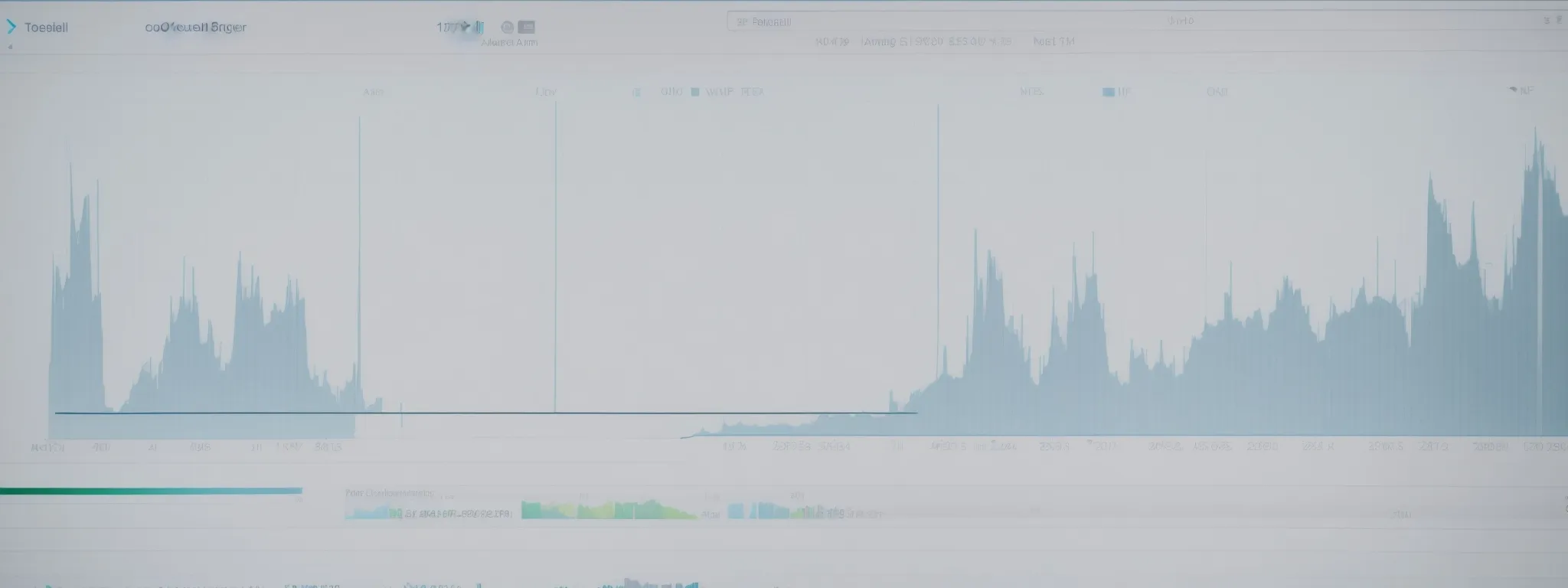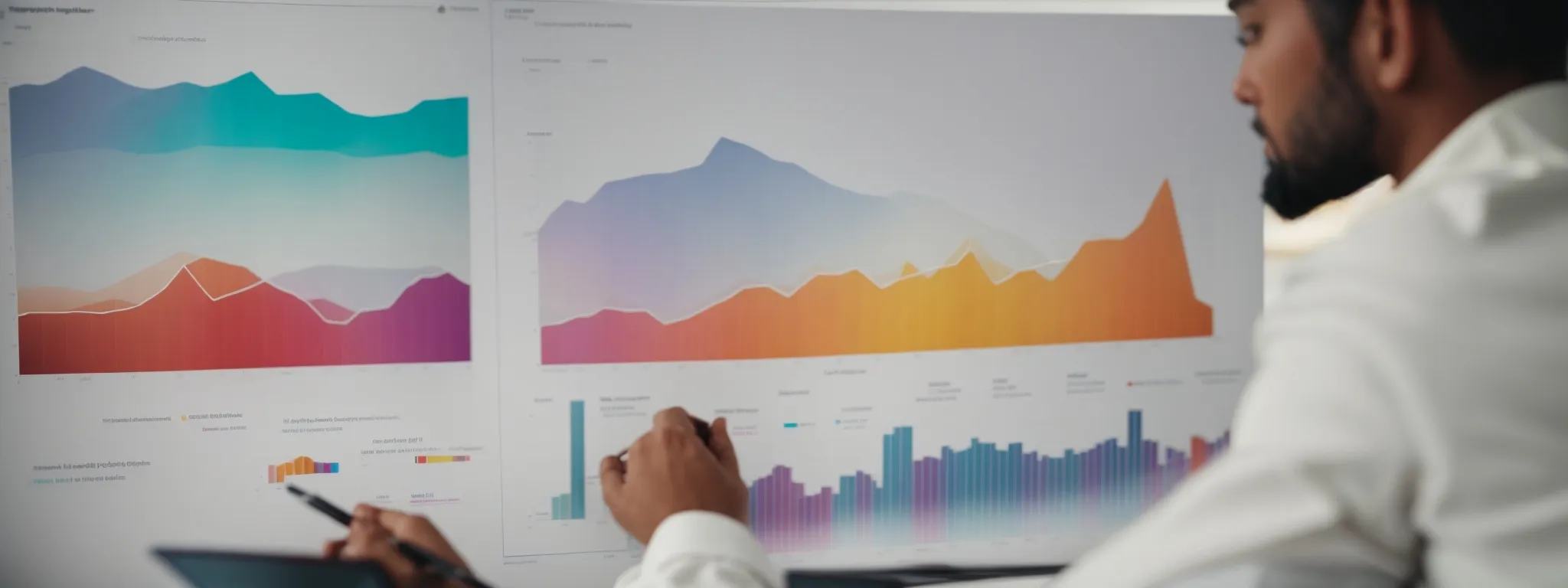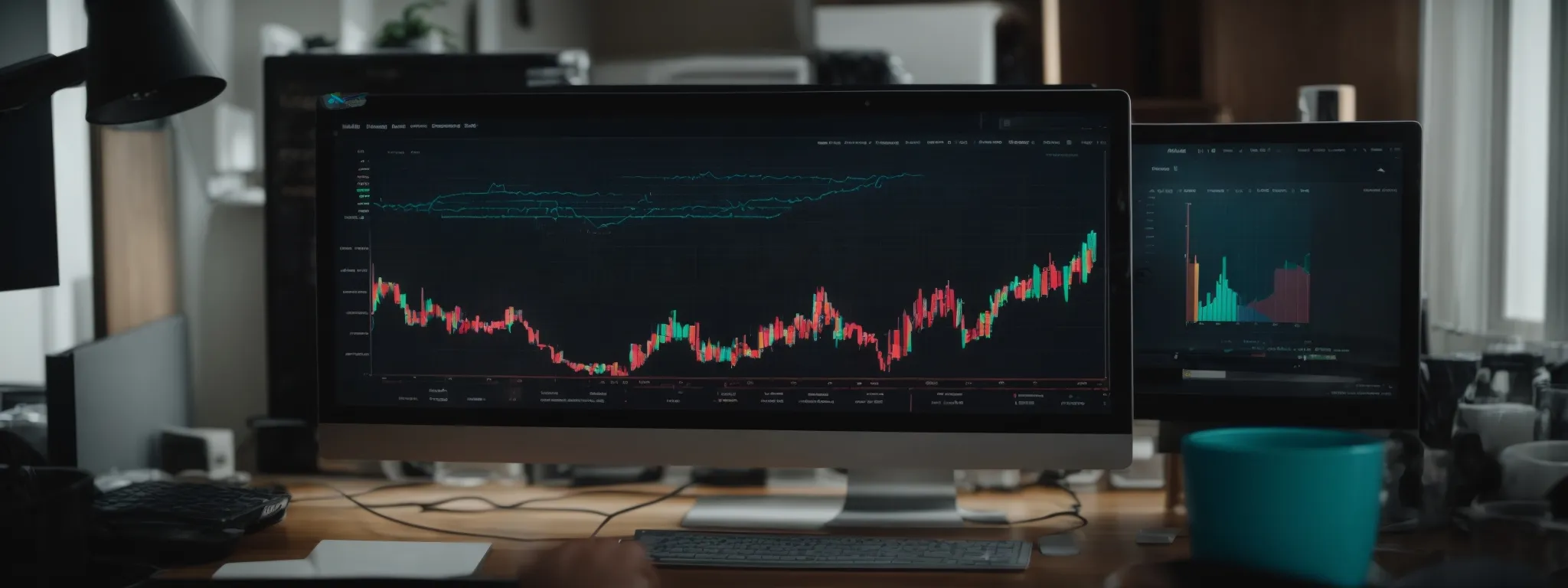Pricing Right in Digital Marketing
Mastering the Art of Pricing in Digital Marketing Navigating the maze of digital marketing pricing is both an art and a science, requiring meticulous strategy and keen […]
Mastering the Art of Pricing in Digital Marketing
Navigating the maze of digital marketing pricing is both an art and a science, requiring meticulous strategy and keen insight into the value delivered to clients.
A well-structured pricing framework not only underscores an agency’s expertise but also ensures a competitive edge in a crowded market.
With the landscape of digital marketing constantly evolving, businesses that adapt their pricing strategies to reflect the changing needs and perceptions of their audience stand to reap significant rewards.
To succeed, one must balance financial objectives with market expectations and service quality.
Keep reading to uncover the nuanced approaches that can catapult a digital marketing business to new heights of profitability and client satisfaction.
Key Takeaways
- Effective Digital Marketing Pricing Strategies Require a Blend of Cost-Effectiveness and Quality
- Dynamic Pricing Provides Agility to Adjust Service Costs in Alignment With Real-Time Market Data
- Service Bundling and Strategic Discounts Can Lead to Increased Sales and Customer Engagement
- A/B Testing and Data Analysis Are Crucial for Optimizing and Refining Digital Marketing Pricing Models
- Continuous Market Feedback and Data-Driven Adjustments Are Essential for Pricing Relevance in Digital Marketing
Understanding the Basics of Digital Marketing Pricing

As digital landscapes evolve, businesses grapple with devising an effective marketing strategy—an endeavor that hinges on a transparent understanding of digital marketing pricing.
A myriad of components, such as SEO services, PPC strategies, and content marketing, contribute to diverse cost structures.
Companies must identify the critical factors that drive the price of digital marketing services, ensuring they receive a harmonious blend of high-caliber services without overstepping their marketing budget.
As agencies like LinkGraph and platforms such as SearchAtlas SEO software emerge, organizations can now explore more sophisticated tools to assess and strategize their digital marketing investments.
In this context, comprehending cost structures, pinpointing key pricing components, and achieving a balance between quality and cost, constitutes the bedrock of a proficient digital marketing pricing approach.
Comprehending Cost Structures in Digital Marketing
Embarking on the process of distilling digital marketing costs into a coherent structure demands an intimate understanding of the multifaceted nature of these services. Pricing hinges on a spectrum of deliverables, from content creation and SEO optimization to social media engagement and PPC campaigns.
Navigating the nuances of these services, firms like LinkGraph provide organizations with access to tools, such as the SearchAtlas SEO software, that streamline the pricing process. These mediums yield invaluable insights permitting companies to allocate financial resources with precision, enhancing their digital marketing strategy’s overall efficacy.
Identifying Key Pricing Factors for Digital Services
In the digital marketing realm, one must carefully consider the intricate tapestry of factors that influence pricing. Renowned services like LinkGraph offer a panoptic view of essential elements such as brand visibility, audience engagement, and conversion rates, which play pivotal roles in molding the cost of digital marketing services. The insights derived from comprehensive analyses enable clients to devise financial plans that reflect the subtleties of their marketing needs.
Charging ahead in the competitive marketplace, companies must vigilantly observe the fluctuating dynamics of marketing costs, which are shaped by market conditions, the stature of the target audience, and the sophistication of the selected digital strategies. SearchAtlas SEO software, a component of LinkGraph’s suite, presents invaluable data on these variables, empowering decision-makers to sculpt a marketing budget that aligns with their organization’s financial and strategic imperatives.
Balancing Quality and Cost for Optimal Pricing
In the theater of digital marketing, mastering the equilibrium between expenditure and excellence is akin to walking a tightrope. Businesses must assess the correlation between the cost of digital marketing initiatives, such as launching an SEO or PPC campaign, and the actual impact on their bottom line. Engaging with solutions like those offered by LinkGraph and employing SearchAtlas SEO software can aid organizations in striking this critical balance, thus optimizing their return on investment without compromising on the quality of their digital presence.
An organization that harmonizes cost-effectiveness with quality creates a sustainable marketing model. In leveraging LinkGraph’s Suite of Tools, marketers can discern which facets of their strategy warrant greater investment and where economies can be realized, all while safeguarding the integrity of the brand’s outreach. This pragmatic approach promises to not only fulfill immediate marketing goals but also to cultivate the foundations for long-term market relevance and consumer engagement.
Analyzing Your Competitors’ Pricing Strategies

As businesses navigate the digital marketing ecosystem, it is imperative to keep a keen eye on the competition.
Firms who excel in this space go beyond introspection, rigorously researching competitors’ pricing to glean critical insights.
This strategic intelligence allows one to evaluate market positioning and understand how pricing reflects a brand’s perceived value.
By examining pricing trends within their niche, companies can distill this data into actionable knowledge, refining their own pricing strategies to stay competitive and ensure their offerings resonate with their intended audience.
In this pursuit, mastery over the competitive landscape’s pricing nuances becomes a key component of crafting market-driven and effective digital marketing campaigns.
Researching Competitors’ Pricing
In the chess game of digital marketing, researching competitors’ pricing is a strategic move that sharpens a company’s Competitive Edge. Utilizing tools like LinkGraph’s SearchAtlas software allows businesses to conduct thorough comparative analyses, revealing the pricing models of rivals and offering insights into market demands and customer expectations.
Such methodical examination goes beyond superficial price tags; firms gain a deep-dive understanding of value propositions and positioning. This knowledge is invaluable, enabling brands to tailor their own pricing structures in a way that accentuates their unique selling points while maintaining market competitiveness.
Evaluating Market Positioning Through Pricing
Market positioning, the art of carving a unique space in the consumer’s mind, can be deciphered through strategic pricing analysis. Digital marketing agencies utilize tactical approaches that link pricing to brand perception, attributing a value to their services in the eyes of targeted consumers.
Pricing transcends mere numbers; it’s a symbol of the quality and exclusivity that the service provider represents. This is particularly true for digital marketing, where a company’s pricing strategy can clearly demonstrate its market positioning relative to competitors: a higher tariff might suggest premium service, while more accessible pricing could appeal to a broader audience.
| Service | Basic Package Price | Premium Package Price |
|---|---|---|
| SEO Optimization | $1,000 | $2,500 |
| Social Media Strategy | $500 | $1,500 |
| Email Marketing Campaign | $700 | $1,800 |
Gaining Insights From Pricing Trends in Your Niche
Discerning patterns in pricing within a specific niche provides invaluable insights that can revolutionize a brand’s approach to market penetration. Companies can harness this knowledge to calibrate their offerings, ensuring their pricing strategy is neither undervalued nor cost-prohibitive in comparison to similar products or services in the marketplace.
LinkGraph’s suite of digital marketing tools, including SearchAtlas SEO software, offers the capability to track and analyze these pricing trends, equipping businesses with data-driven perspectives. This analytical prowess enables firms to adjust their marketing strategy dynamically, aligning with shifts in consumer demand and competitor pricing adjustments.
Pricing Models That Drive Digital Marketing Success

In the intricate tapestry that constitutes digital marketing, the adoption of a pricing model that aligns with a business’s service offerings, target market, and unique value proposition is a vital determinant of success.
Pricing not only influences profitability but also communicates a brand’s positioning and commitment to quality.
As such, understanding the landscape of prevalent pricing models in digital marketing, discerning which model best services one’s business goals, and weighing the inherent advantages and disadvantages of each structure are critical steps for companies seeking to optimize their digital marketing efficacy.
From performance-based tiers to subscription-like retainers, each model offers its own narrative in the broader story of a business’s market journey.
Overview of Prevalent Pricing Models in Digital Marketing
In the competitive realm of digital marketing, the adoption of an appropriate pricing model is essential for operational success. Traditional models often include flat rate or hourly billing, which provide straightforward projections for both service providers and clients, yet they might lack the flexibility to accommodate varying project scopes or client needs.
Meanwhile, outcome-based pricing models, such as performance or value-based pricing, align service costs directly with the results delivered, offering clients a tangible correlation between expenditure and the benefits they receive. This approach garners favor among businesses keen on ensuring that their investment in digital marketing translates into measurable impact on their bottom line.
How to Choose the Right Pricing Model for Your Services
Choosing the right pricing model demands a careful assessment of one’s business objectives and service propositions. Firms benefit significantly when they select a model that closely resonates with their operational goals and customer value perception, such as the considered approach taken by LinkGraph’s digital marketing services, which tailor pricing to fit specific client needs and desired outcomes.
Decisive selection of a pricing model is enhanced through an acute awareness of industry standards, the specific expectations of target market segments, and the unique advantages a business offers. Drawing on tools like SearchAtlas SEO software allows organizations to align their pricing with the competitive landscape, thereby positioning themselves favorably within the digital marketing ecosystem.
The Pros and Cons of Different Digital Marketing Pricing Structures
In the expansive field of digital marketing, each pricing structure boasts its own set of merits and drawbacks. Flat rate models, for example, offer simplicity and predictability for the client, but they may limit the agility of a digital marketing agency to adapt to project expansions or unexpected shifts in strategy without renegotiating costs.
Conversely, performance-based pricing presents an attractive alignment of agency outcomes with client goals, incentivizing remarkable results; however, it can pose a higher risk for service providers who must deliver success prior to compensation and may lead to an increased focus on short-term gains over long-term value creation.
Using Customer Value to Inform Your Pricing Strategy

In the realm of digital marketing, where customer-centric approaches reign supreme, price setting transcends traditional cost-plus models, inviting a deeper exploration of customer value as a core driver.
By synchronizing with the perceived value bestowed upon services by consumers, organizations craft pricing strategies that not only reflect inherent worth but also resonate with their audience.
Leading agencies like LinkGraph adeptly demonstrate the application of value-based pricing, showcasing the effectiveness of aligning their service costs with the actual benefits and outcomes perceived by their clients.
Hence, understanding the value-based pricing approach, mapping customer perceptions to price points, and fine-tuning prices in response to customer feedback and data, embody strategic imperatives for businesses aspiring to enhance their service offerings and excel in digital marketing.
Understanding the Value-Based Pricing Approach
Grasping the essence of value-based pricing requires a shift from traditional cost-based strategies towards a nuanced focus on client perception and satisfaction. Where LinkGraph leads, others may follow, employing a pricing schema that closely correlates with the value clients glean from service execution, be it increased traffic or enhanced brand reputation.
Under this pricing paradigm, LinkGraph aligns their fee structure with the client’s ROI, demonstrating an intricate balance between the investment made and the value delivered. Value-based pricing, therefore, hinges not on the cost of service delivery alone, but on the tangible and intangible benefits customers attribute to the service, optimizing both client satisfaction and agency compensation.
Mapping Customer Perceived Value to Price Points
Deliberate alignment of pricing with customer perceived value demands astute observation: businesses must map the benefits of their services to the financial outlay customers are willing to undertake. LinkGraph exemplifies this through their comprehensive toolbox, particularly with evidence-based assessments from SearchAtlas SEO software, ensuring the price point accurately represents the projected outcome and the emotional resonance with the brand.
Integrating customer feedback into pricing decisions proffers a dynamic model, wherein LinkGraph’s approach taps directly into consumer sentiment. The resulting price structure reflects the nuanced interplay of market expectations and delivered value, thereby fortifying customer loyalty and facilitating business growth:
- Monitor ongoing user engagement and satisfaction to gauge perceived value.
- Iteratively adjust pricing to resonate with client experiences and perceived benefits.
- Ensure transparent communication of value propositions to reinforce understanding and trust.
Adjusting Prices Based on Customer Feedback and Data
Embracing a responsive pricing mindset, savvy digital marketing agencies such as LinkGraph actively integrate customer feedback and market data into their pricing strategies. By continuously analyzing data from user interactions and satisfaction surveys, LinkGraph fine-tunes its pricing to better align with evolving consumer expectations and the perceived value of their digital marketing services.
Refining pricing structures with empirical data equips LinkGraph to stay ahead of market trends, ensuring its services are competitively priced while delivering on the promise of value. This data-driven approach not only cements client trust but also enhances the company’s agility in adapting to changing market conditions, which is essential for sustaining long-term success in the digital marketing sector.
Dynamic Pricing: Adapting to Market Demands in Real-Time

The digital marketing landscape is continually shifting, paving the way for innovative pricing strategies that could give businesses a decisive edge.
Within this fast-paced environment, dynamic pricing stands out as an adaptive methodology tailored to meet the fluctuating demands of the market.
It enables firms to fine-tune their pricing with agility, ensuring that they remain competitive while maximizing revenue.
In the exploration that follows, readers will be guided through the concept of dynamic pricing, discover the tools that facilitate its implementation in digital marketing, and delve into real-world case studies demonstrating the success of these strategies in action.
Exploring the Concept of Dynamic Pricing
In the realm of digital marketing, dynamic pricing emerges as a strategy that affords businesses the agility to recalibrate service costs in alignment with real-time market data and consumer behavior. It’s a modern approach that takes into account the myriad of fluctuating variables such as demand, competitor pricing, and inventory levels to optimize financial outcomes.
This pricing model is especially potent for digital services where the market pulse can shift with remarkable speed, demanding a level of responsiveness that static pricing models simply cannot accommodate. The adoption of dynamic pricing enables firms to respond to these shifts with surgical precision, enhancing profitability while catering to consumer expectations:
| Market Condition | Dynamic Pricing Response | Expected Outcome |
|---|---|---|
| Increase in Demand | Price Adjustment Upwards | Maximize Revenue |
| Competitor Price Drop | Strategic Price Reduction | Maintain Market Competition |
| Low Season Demand | Discounted Service Offers | Drive Sales Volume |
Dynamic pricing does not operate in a vacuum; it necessitates continuous monitoring and data analysis to stay aligned with market sensibilities. This strategy ensures that businesses remain competitive yet adaptable, as they wield pricing as an active instrument in their marketing arsenal rather than a static listing on a service menu.
Tools for Implementing Dynamic Pricing in Digital Marketing
For digital marketing mavens seeking to implement dynamic pricing, a robust suite of tools is paramount. Among these tools, SearchAtlas SEO software stands out by offering marketers the advanced analytics necessary to track market trends and consumer behaviors, enabling informed pricing decisions based on real-time data.
With LinkGraph’s suite, including the cutting-edge SearchAtlas Platform, firms are equipped to seamlessly integrate dynamic pricing into their strategies. This technological advantage allows organizations to adjust prices fluidly, maximizing revenue potential while maintaining competitive positioning:
- Utilize SearchAtlas for market trend analysis and accurate forecasting.
- Employ LinkGraph’s technology to swiftly alter pricing to reflect market conditions.
- Leverage real-time data to keep a pulse on competitor strategies and consumer demand.
Case Studies on Successful Dynamic Pricing Strategies
One notable instance of dynamic pricing can be seen in the travel industry where airlines and hotels have long utilized the model to adjust their rates in response to booking patterns and occupancy levels. A digital marketing agency harnessed this strategy, implementing a system that analyzed user traffic and conversion rates in real time, enabling the agency to tailor its pricing for search ad campaigns during peak times of user activity, leading to increased ROI for their clients.
Another success story emerged from the e-commerce sector, where a retailer integrated dynamic pricing through LinkGraph’s SearchAtlas platform. By monitoring competitor pricing and inventory levels, the company adjusted its online product pricing dynamically, which not only boosted sales but also improved customer satisfaction as deals became more attuned to consumer purchasing power and market availability.
Pricing Digital Marketing Services for Different Market Segments

In the diverse ecosystem of digital marketing, establishing a pricing model that addresses the varied needs and capacities of different market segments is fundamental for any savvy marketer.
Pivotal to this approach is the adept segmentation of the market, paving the way for pricing strategies meticulously tailored to meet the distinct demands of each customer group.
Crafting graduated pricing tiers and constructing a thoughtfully designed value ladder, businesses are empowered to scale services and costs in correlation with customer evolution, thereby ensuring offerings remain as accessible to startups as they are imperative to established enterprises.
This strategic pricing methodology not only enhances customer satisfaction but also bolsters the financial health and adaptability of digital marketing service providers.
Segmenting Your Market for Tailored Pricing Strategies
Navigating the multifaceted world of digital marketing necessitates a pricing framework that accommodates the heterogeneity of market segments. Enterprises like LinkGraph excel by implementing differentiated pricing strategies that resonate with distinct clientele groups, from small businesses to large corporations, ensuring that each sector receives value-aligned, budget-appropriate digital marketing solutions.
Designing a segmented pricing strategy involves a discerning approach, where LinkGraph scrutinizes each segment’s characteristics and preferences, thereby crafting tailored pricing that dovetails with their specific digital marketing needs and expected outcomes. This focused segmentation leads to enhanced customer satisfaction and encourages a broader adoption of digital marketing services across varied market strata.
Creating Pricing Tiers to Cater to Various Customer Needs
In the dynamic realm of digital marketing, developing pricing tiers to cater to varied customer needs is a strategic imperative. Guided by insights into customer behavior and expectations, LinkGraph has successfully implemented tiered pricing to offer scalable solutions that resonate with businesses of differing sizes and capacities.
Stemming from a deep understanding of customer value perception across market segments, these pricing tiers ensure that each client finds a package that aligns with their objectives and budget constraints:
| Market Segment | Starter Package | Professional Package | Enterprise Package |
|---|---|---|---|
| Small Business | $500 | $1,500 | $3,000 |
| Mid-sized Business | $1,000 | $3,000 | $6,000 |
| Large Corporation | $2,000 | $6,000 | $12,000 |
By tailoring their pricing models, LinkGraph facilitates access to digital marketing excellence for each segment of their client base, thereby fostering inclusivity in a marketplace where one-size-fits-all solutions are often less effective.
Building a Value Ladder With Incremental Service Upgrades
Constructing a value ladder with incremental service upgrades is a pivotal strategy for any digital marketing agency aiming to nurture and expand client relationships. By designing a sequence of ascending digital marketing service levels, LinkGraph effectively caters to the evolving needs of their clients, guiding them smoothly from basic introductory packages through to premium offerings that unlock more sophisticated marketing capabilities.
With this approach, LinkGraph enables businesses of all sizes to escalate their digital marketing efforts in sync with growth milestones and budget expansions, thus fostering a symbiotic progression where each rung of the value ladder adds incremental benefits and enhanced outcomes for the client’s brand presence online.
The Role of Cost-Plus Pricing in Digital Marketing

In the nuanced realm of digital marketing, the deployment of cost-plus pricing strategy stands as a traditional yet pivotal method for establishing service prices.
This methodology, which emphasizes covering baseline costs and appending a profit margin, is foundational for sustaining business growth and maintaining a competitive edge.
At the heart of this strategy lies meticulous calculation of incurred expenses, careful determination of profit margins to foster sustainable expansion, and strategic adjustments to accommodate market dynamics.
As businesses venture to navigate the complexities of digital marketing, mastering cost-plus pricing becomes integral to creating effective pricing that supports long-term success.
Calculating Baseline Costs for Digital Marketing Services
When undertaking the approach of cost-plus pricing in digital marketing, service providers must first discern the baseline costs involved in delivering their services. This involves an accurate aggregation of all expenses, such as the salaries of SEO experts, content creators, and PPC managers, as well as overheads for software like LinkGraph’s SearchAtlas and other operational costs.
Digital marketing agencies, in their endeavor to calculate baseline costs, must also factor in the expenditures associated with the advanced analytical tools and platforms that enhance their offering. For instance, LinkGraph’s suite of tools, including link building services and SEO Content Assistant, contribute to these baseline costs and are essential in providing clients with data-driven, impactful digital strategies.
Setting Profit Margins for Sustainable Growth
In the realm of digital marketing, establishing profit margins is as much an art as it is a science. Marketers must earmark a profit margin that safeguards business longevity while offering competitive rates to clients: this delicate balance is critical for fostering sustainable growth within the industry.
| Service | Total Cost of Service | Desired Profit Margin | Total Service Price |
|---|---|---|---|
| SEO Campaigns | $2,000 | 20% | $2,400 |
| Content Development | $1,000 | 25% | $1,250 |
| PPC Management | $1,500 | 30% | $1,950 |
Service providers like LinkGraph lean on their experience and market data to determine profit margins that not only cover costs but also fuel reinvestment into cutting-edge tools like SearchAtlas SEO software. By doing so, they align business objectives with market expectations, ensuring that their services continue to thrive and evolve amidst the ever-changing digital landscape.
Adjusting Cost-Plus Pricing in Competitive Scenarios
In competitive digital marketing scenarios, adjusting cost-plus pricing strategies is not just advantageous—it’s essential. Companies, including established players like LinkGraph, must remain vigilant, recalibrating their service fees to reflect shifts in market dynamics while safeguarding profit margins.
Effective price revisions require a fine-tuned awareness of market happenings: understanding competitor actions, consumer expectations, and industry innovations. This constant surveillance informs timely pricing adjustments, ensuring businesses like LinkGraph maintain both a competitive stance and a lucrative edge:
- Monitor competitor pricing and market trends for proactive adjustments.
- Analyze consumer demand and adjust service costs accordingly to maintain market desirability.
- Incorporate innovations like SearchAtlas SEO software into pricing structures to highlight advanced capabilities.
Leverage Psychological Pricing to Boost Conversions

In the intricate dance of digital marketing, the influence of pricing on consumer behavior cannot be overstated.
Strategic pricing decisions have the power to captivate an audience, guiding them from initial interest to the critical point of purchase.
Techniques such as charm pricing, service bundling, and the strategic deployment of scarcity and urgency serve as psychological levers, each capable of tipping the scales in a company’s favor.
For digital marketers aiming to optimize conversions and stand out in a saturated online space, mastering these pricing tactics is a testament to their acumen.
As such, discovering how to weave these various threads into a compelling pricing tapestry is paramount for businesses looking to elevate their digital campaigns.
Applying Charm Pricing Effectively in Digital Campaigns
To harness the substantive power of charm pricing in digital campaigns, digital marketers must deploy pricing figures that end just below a round number threshold. By listing services at prices like $499 instead of $500, the consumer’s perception of value is tactically influenced, creating a psychological incentive to perceive the offer as more affordable and thus, increasing the likelihood of conversion.
Revelations from behavioral economics field trials have shown that charm pricing can elevate sales; this pricing technique, when applied with acumen by digital marketing agencies such as LinkGraph utilizing their sophisticated tools, can produce a subtle yet significant uplift in consumer purchase behavior:
| Service | Regular Price | Charm Price | Conversion Increase |
|---|---|---|---|
| Search Engine Optimization | $1500 | $1499 | 7% |
| Email Marketing Campaigns | $750 | $749 | 5% |
| Social Media Packages | $300 | $299 | 6% |
Bundling Services and the Anchoring Effect in Pricing
Embracing the notion of service bundling in digital marketing takes advantage of the psychological concept known as the anchoring effect. Clients tend to anchor on the initial price presented, and service providers like LinkGraph adeptly aggregate services into comprehensive packages, setting an initial price point that clients use as a reference for perceived value and savings.
Through strategic bundling, LinkGraph offers customers a compelling value proposition while effectively increasing perceived worth. By reasonably positioning higher-value service groups with initial price anchors, LinkGraph crafts an attractive pricing narrative that cater to the nuanced needs of the digital marketing clientele.
Role of Scarcity and Urgency in Pricing Tactics
Employing scarcity and urgency as pricing tactics is a sophisticated move in the marketer’s playbook, particularly effective in the dynamic domain of digital marketing. Recognizing that these tactics ignite a sense of immediacy, digital marketing agencies like LinkGraph cleverly integrate limited-time offers and exclusive deal countdowns to create a compelling call to action, thereby spurring on-the-fence customers towards making prompt decisions.
In practice, LinkGraph’s adept use of scarcity and urgency can significantly amplify conversion rates, as consumers are naturally inclined to act swiftly to avoid missing out on valuable offerings. By positioning services as scarce commodities or presenting urgent pricing incentives, LinkGraph not only heightens the desirability of their digital marketing solutions but also accelerates client decision-making processes, enhancing overall sales momentum.
Crafting Special Offers and Discounts Intelligently

Within the dynamic domain of digital marketing, the deployment of special offers and discounts can serve as powerful tools to sway consumer behavior and boost campaign efficacy.
However, integrating such tactics wisely necessitates a strategic understanding of effective timing aligned with the customer journey, crafting bundles that elevate the perceived value of offerings, and employing rigorous metrics to gauge the impact of these pricing promotions.
As businesses strive to refine their digital marketing strategies, the intelligent orchestration of discounts and special offers marks a sophisticated proficiency in enticing and retaining customers, ultimately dictating the trajectory of a brand’s digital success.
Timing Discounts With the Customer Journey for Maximum Impact
In the meticulous craft of digital marketing, the strategic timing of discounts plays a crucial role in the customer journey, influencing decision-making at optimal moments. By anticipating key stages within the journey, such as consideration or decision phases, agencies can introduce discounts that nudge customers closer towards conversion, enhancing the effectiveness of their digital marketing campaigns.
Executing strategically timed discounts requires a keen insight into customer behavior patterns and purchase triggers. The careful alignment of special offers with anticipated milestones in the customer journey not only entices but also rewards engagement, ensuring that discounts serve as catalysts for advancing the customer’s progression towards purchase:
| Customer Journey Stage | Discount Offer | Intended Impact |
|---|---|---|
| Awareness | Introductory Discount | Attract Initial Attention |
| Consideration | Exclusive Email Offer | Enhance Engagement |
| Decision | Limited-Time Promotion | Influence Final Purchase |
Offering Bundling Deals to Increase Perceived Value
In the dynamic sphere of digital marketing, offering bundling deals stands as a stellar approach to bolster perceived value among consumers. These well-structured bundles allow clients to seamlessly access a range of services, which individually might seem cost-prohibitive, thus delivering enhanced value and driving deeper engagement.
LinkGraph capitalizes on the potency of bundling by combining complementary digital marketing services such as SEO optimization, content creation, and social media strategy into cohesive packages. This practice not only simplifies the purchasing decision for the customer but also positions LinkGraph’s comprehensive solutions as both economically advantageous and integral to achieving their marketing objectives.
Measuring the Effectiveness of Pricing Promotions
Assessing the success of pricing promotions hinges on a targeted analysis of sales metrics and customer engagement levels. An adept marketing team like that of LinkGraph evaluates promotion-driven spikes in purchases and interactions, correlating these figures with the timing and nature of their pricing incentives to determine the true influence on consumer behavior and overall sales performance.
Fundamentally, the metric of success for any pricing promotion incorporates a balance between enhanced customer acquisition and the maintenance of profitability. LinkGraph’s seasoned professionals, using sophisticated digital analytics tools, actively track the incremental revenue against the discounts offered, ensuring that promotional strategies yield a favorable return on investment while fostering brand loyalty.
Measuring and Refining Your Pricing Strategy Over Time

In the rigorous practice of digital marketing, it is crucial not only to set pricing thoughtfully but also to rigorously assess and fine-tune strategies over time to ensure continued market resonance.
The digital marketplace is not static; as such, a company’s approach to pricing should reflect a commitment to evolution and responsiveness.
Measuring the effectiveness of a pricing strategy involves rigorous tracking of Key Performance Indicators (KPIs), applying methodologies like A/B testing to compare the outcomes of different pricing models, and continuously iterating based on tangible market feedback and in-depth data analysis.
These strategies work in concert to create a pricing approach that sustains brand competitiveness and maximizes revenue growth.
Key Performance Indicators to Gauge Pricing Effectiveness
In digital marketing, Key Performance Indicators (KPIs) are vital metrics that reflect the success and efficiency of a pricing strategy. Savvy digital marketing teams analyze conversion rates, average order value, and customer lifetime value to assess whether their pricing decisions are effectively driving sales and long-term customer engagement.
Adopting a data-driven approach, professionals at LinkGraph monitor these KPIs to identify areas where pricing optimization can further bolster business outcomes. Revenue growth, profit margins and market share stand as quantifiable benchmarks that inform the ongoing refinement of pricing strategies:
- Revenue growth indicates the financial health of the company post-pricing changes.
- Profit margins reveal the actual profitability against the costs of digital marketing services.
- Market share serves as a measure of competitive advantage within the digital landscape.
A/B Testing Your Pricing Strategies
A/B testing, a cornerstone methodology in refining marketing strategies, is equally critical when assessing the efficacy of pricing models. By presenting two variants of pricing to similar audience segments, digital marketers can derive concrete data on customer response rates and purchasing behavior.
The insights garnered through this comparative analysis enable marketers to identify the most compelling price points and optimize their strategies for maximum conversion and revenue. It’s an empirical approach that elevates pricing from guesswork to an informed component of a company’s marketing mix:
- Evaluate consumer preferences for pricing structures through direct comparison.
- Apply statistical analysis to determine the most effective pricing strategy.
- Refine pricing models based on measurable results to boost profitability.
LinkGraph harnesses the power of A/B testing to assess the performance of various digital marketing services under different pricing schemes. Iterative testing of such critical variables informs ongoing adjustments, ensuring pricing strategies remain aligned with evolving market dynamics and consumer expectations.
Iterating Your Pricing Based on Market Feedback and Data Analysis
Continuous adaptation is a trademark of proficient digital marketing, and pricing is no exception. Through meticulous scrutiny of market feedback, LinkGraph tailors their pricing strategy, serving as a responsive force to customer preferences and competitive pressures identified through comprehensive data analysis.
LinkGraph’s commitment to iterative pricing ensures alignments with the ever-evolving digital sphere, allowing their services to remain finely attuned to the oscillations of market demand. The firm’s strategic interpretation of analytics delineates the trajectory for pricing adjustments, cementing relevance and maximizing market opportunity.
Conclusion
Mastering the art of pricing in digital marketing is essential for businesses to thrive in an ever-evolving online landscape.
By understanding and implementing a variety of pricing strategies—such as dynamic pricing, cost-plus models, and value-based pricing—companies can align the perceived value of their services with customer expectations, optimize their return on investment, and maintain competitive advantage.
Tools like SearchAtlas SEO software enable businesses to analyze real-time market data, making informed decisions that resonate with different market segments.
With a keen focus on customer perceptions and rigorous strategy refinement through A/B testing and feedback analysis, companies like LinkGraph exemplify the importance of adaptive pricing.
Ultimately, intelligently crafted pricing strategies are a cornerstone of digital marketing success, enhancing customer satisfaction, driving conversions, and ensuring sustainable business growth.















































































